That Hindi cinema and fashion go hand-in-hand is well known. They have enjoyed a symbiotic relationship for decades, and continue to do so, given how films influence fashion as much as or more than how much real-life wardrobes accentuate the cinema of today. In order to document this inextricable bond between fashion and films in India, author Sujata Assomull and illustrator Aparna Ram document, both in text and sketches, the 100 most memorable costumes seen in Hindi films from the 50s to as recent as Shashanka Ghosh’s buddy film Veere Di Wedding last year. Their selections, descriptions, and illustrations form Roli Books’ new release, 100 Iconic Bollywood Costumes. [caption id=“attachment_7350261” align=“alignnone” width=“825”]  Shikha Talsania, Sonam Kapoor Ahuja, Kareena Kapoor Khan, and Swara Bhasker in a still from Veere Di Wedding[/caption] Both Sujata and Aparna have spent their formative years overseas and thus confess Hindi cinema was their only window to the world of Indian fashion. “For me, growing up as an NRI in London, Indian films were really my point of reference when it came to Indian fashion. When I was eight years old, I watched Umrao Jaan (1980), and it was thanks to the mesmerising jewellery and costumes of the film that I enrolled into a Kathak dance class. And for the next family wedding, I wore a brocade anarkali just like the one Rekha wears in the song, ‘In Ankhon Ki Masti’ ,” saya Sujata. “Growing up in London in the 90s, I looked to the movies as a guidebook of what was fashionable, and what was not. I still take fashion pointers from the movies, and I don’t think I’m alone in that. Long may it continue!” adds Aparna. Both the women stress on the impact of Hindi cinema on not only fashion but also sociology, in terms of looking at how the perception of women has changed over the years, on the basis of how they were dressed through the decades. Though they have explained they could not include costumes of male stars in their scope of study, their emphasis on female attires has lent the book a much-needed female gaze. It is a known fact that back in the 50s and 60s, the Hindi film heroine was identified as the one wearing Indian attires like a sari or salwar-kameez. On the other hand, Western attires were limited to those playing the vamps, mostly “the other woman”. It’s impossible to forget the embellished Western costumes Helen wore during her iconic song sequences, since most of her cameos were in the capacity of a vamp. However, in the book, Sujata points out how the 70s changed that. Leading ladies like Parveen Babi (Amar Akbar Anthony and Namak Halaal) and Zeenat Aman ( _Yaadon Ki Baaraat_ and Qurbaani) started the trend of the Hindi film heroine choosing Western outfits over the traditional Indian ones. Whether it was the white palazzo jumpsuit and black choker in the song ‘Chura Liya Hai Tumne’ or the strappy red maxi dress and black beaded necklace in the song ‘My Name Is Anthony Gonsalves’, Zeenat and Parveen together changed how the leading lady in Hindi cinema was perceived. [caption id=“attachment_7350271” align=“alignnone” width=“825”] 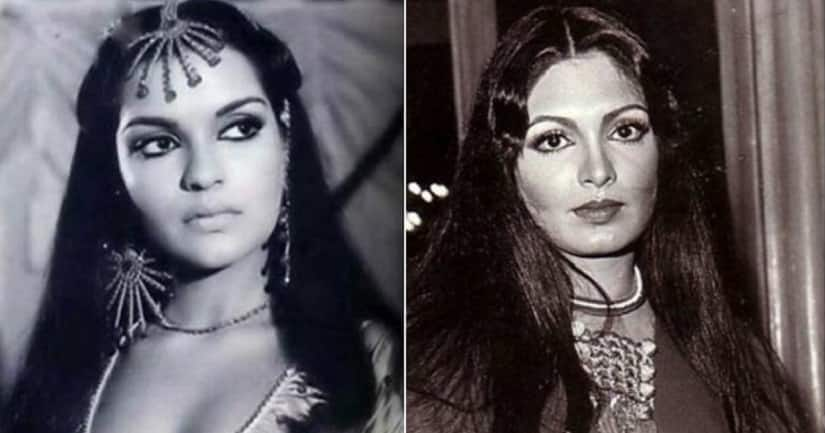 Parveen Babi and Zeenat Aman[/caption] However, their characters’ inclination to wear Western attire was justified by the time they spent abroad in their formative years. It is similar to how Katrina Kaif is mostly introduced as an NRI woman who returned to India after being educated in a foreign land, in order to explain why she speaks Hindi with a Western accent. While these two women are credited with bringing a sea change in the wardrobe of Bollywood’s leading lady, Sujata and Aparna offer other instances where the Hindi film heroine chose to dress up in Western outfits. “While I think it was in the 70s we saw this change, the 1969 film Aadmi Aur Insaan, with Mumtaz playing Rita, a modern office-going woman, in many ways, set the trend. And to show her ‘modernity’, costume designer Bhanu Athaiya, a woman whose influence on Indian fashion is often forgotten today, mostly styled her in Western clothes with very Western accessories, such as a scarf. She was a girl who loved her fashion, and was on trend, be it with off-shoulder dresses or deep necklines — which could have been considered risqué but worked so well with the character. Mumtaz had the élan to make all her form-fitted clothes seem so chic,” says Sujata. [caption id=“attachment_7350301” align=“alignnone” width=“825”] 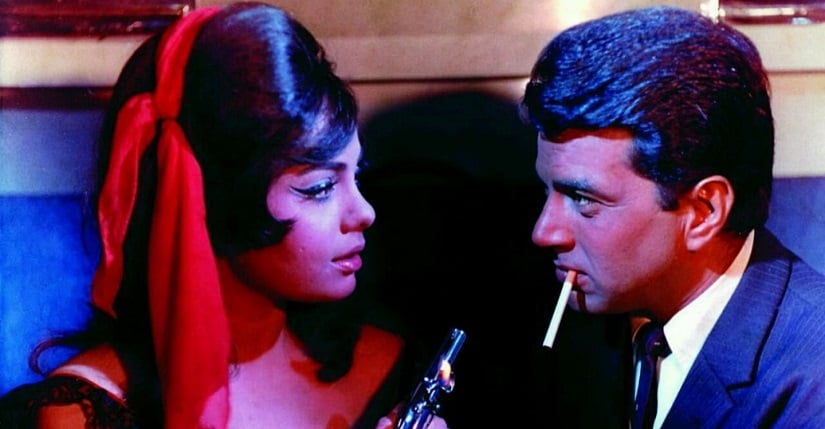 Mumtaz and Dharmendra in a still from Aadmi Aur Insaan[/caption] “Indian born-and-bred women like Mumtaz and Sharmila Tagore showed that it was okay to be clothed in dresses and swimsuits. However, it was really the 70s which saw looks like Shabana Azmi’s bell-bottomed trousers in Amar Akbar Antony, Dimple Kapadia’s skirts in Bobby, and Neetu Singh in Khel Khel Mein. No longer was Western wear strictly associated with the vamp. These women had relatable Indian sensibilities, and still dressed in frocks, jumpsuits, and trousers,” Aparna adds. Indian attire, however, continues to hold an immense influence on both the ramp and the screen. The sari has been a recurrent motif in both places, from Vyjayanthimala’s red-and-white Bengali-style sari in Raj Kapoor’s 1964 film Sangam; to Smita Patil’s rustic yet colourful saris in Ketan Mehta’s 1987 film Mirch Masala; to Madhuri Dixit’s royal purple sari with a backless blouse in Sooraj Barjatya’s 1994 blockbuster Hum Aapke Hain Koun..! ; to Raveena Tandon’s yellow sari paired with a blouse with frills in the song ‘Tip Tip Barsa Paani’; to Kamal Haasan’s nauvari Maharashtrian sari in his 1997 directorial Chachi 420; to Sushmita Sen’s polka-dot sari in Farah Khan’s 2004 hit Main Hoon Na; to Rekha’s sari-gown in the song ‘Kaisi Paheli’ in Pradeep Sarkar’s 2005 romantic drama Parineeta; to Priyanka Chopra Jonas’ silver sari with a bikini blouse in Tarun Mansukhani’s 2008 rom-com Dostana. [caption id=“attachment_7350331” align=“alignnone” width=“825”]  Priyanka Chopra Jonas in a still from Dostana[/caption] But Sujata’s favourite sari look in a Hindi film is the flaming orange sari worn by Mumtaz in the 1968 film Brahmachari. “The costume designer for the film was Bhanu Aithaiya. It was pre-draped and zipped as Mumtaz was worried about dancing in a sari. It became known as the ‘Mumtaz Sari’. And to me, this sari is the precursor to the concept sari that you now see in the collections of many contemporary Indian designer collections." Aparna’s choice in the matter is dependent on how an actress carries herself in the garment in real life. “When I think of the sari, I think of Rekha. It’s become her signature style. Combined with her impeccable choice in jewellery, she exudes elegance in every sari she wears. By contrast, I don’t see any of the younger generation carry off the sari the way she does. Most of the younger actress just look uncomfortable in them." [caption id=“attachment_7350371” align=“alignnone” width=“825”] 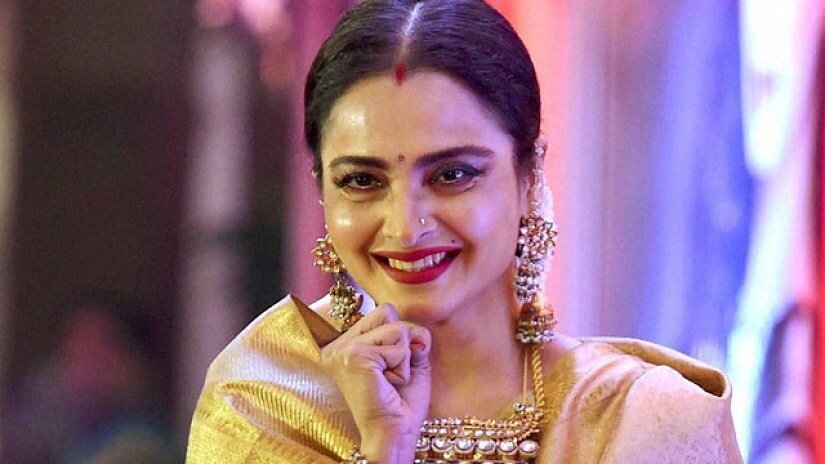 Rekha[/caption] Sujata also sheds light on the trend of the ‘wet white sari’, made famous by director Raj Kapoor. In films like Satyam Shivam Sundaram (Zeenat) and most famously, in the 1985 film Ram Teri Ganga Maili, Kapoor dressed the leading lady mostly in white saris, and often created a situation where the sari turned wet. While it was criticised for being titillating, actresses were directed to make the audience believe they were being exposed by accident, and not by intention. Mandakini’s wet white sari, while she is bathing in a waterfall in Ram Teri Ganga Maili is still considered both risque and sensuous by the audience today. But what also made Raj Kapoor a legendary filmmaker is the way he presented his women on screen. Yash Chopra and Karan Johar followed suit, and often dressed the leading lady in chiffon saris in romantic songs picturised in foreign locales like Switzerland and Scotland. From Sridevi’s yellow sari in the 1989 romantic drama Chandni, and Rekha’s pink sari in Silsila to Kajol’s red sari in the 1998 film _Kuch Kuch Hota Hai_ , and Rani Mukerji’s seasonal saris in the 2005 film Kabhi Alvida Naa Kehna, chiffon is a gift that keeps on giving. [caption id=“attachment_7350411” align=“alignnone” width=“825”] 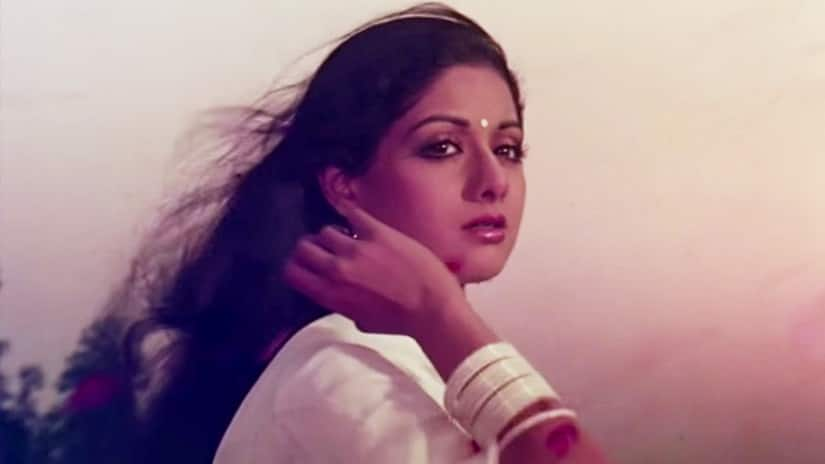 Sridevi in a still from Chandni[/caption] “I think the sheerness of chiffon is a great contrast to the texture of the hills of Switzerland. Costume needs to work with its background as well as the character, and I do think filmmakers like Yash Chopra and Karan Johar, who are such highly visual directors, are very conscious of this,” says Sujata. “I think the fact that chiffon and other lightweight saris drape and flow romantically in the wind is probably what made them a preferred choice for the setting. The romance and soft femininity set against the rugged backdrop made for a visually pleasing aesthetic,” adds Aparna. While Johar has spoken on various occasions about being inspired by Chopra when it comes to the sartorial aesthetic of his leading ladies, the latter was clearly inspired by Raj Kapoor’s wardrobe choices, since he often chose the pristine white colour for most of his leading ladies, from Sridevi in Chandni to Madhuri Dixit in his 1998 musical Dil Toh Pagal Hai. Another attire that has gained an iconic status and credits its existence to a classic Hindi film is the anarkali from Mughal-E-Azam. The silhouette of the high-waist kameez and full skirt, worn by Madhubala in K Asif’s period drama came to be known as the anarkali, named after her character of a courtesan in the film. “It flatters an Indian body. Indian women tend to have slim waists, and are on the hippy side. Its cut accentuates the waist, and its skirt-like flare helps hide the hip. Also, it has this twirl, which just makes it such fun. You wear one and you just want to dance as soon as you put it on,” says Sujata. “It’s conservative for the Indian milieu yet flattering for our body type. The cut lends itself to a wide variety Indian fabrics, and the fact that it’s fun to twirl in is just icing on the cake,” adds Aparna. [caption id=“attachment_7350421” align=“alignnone” width=“825”]  Madhubala in a still from Mughal-E-Azam[/caption] Contemporary fashion, as the costume designers of today insist, acts more as a narrative tool than just a style statement. For instance, in the book, designer Sabyasachi Mukherjee mentions that in Gauri Shinde’s 2012 film English Vinglish, Sridevi’s character Shashi wearing a sari beneath a long overcoat in the US highlights her conflict: hiding her Indian identity while trying to adjust to a foreign land. But both Sujata and Aparna insist the higher purpose of fashion in film existed even during the 60s and 70s. “If you look back to the 60s, films like Waqt and Jewel Thief did this way before. For me, Vyjayanthimala in that coat styled over a red sari, appliqued with 3D white fluffy pints, is the start of nomadic chic in India,” says Sujata. “There were always movies that reflected the character onscreen aptly, whether it is Nadira in Aan or Nargis in Mother India or Sadhna in Waqt. I think we somewhat forgot that through the glamour and sparkle of the 90s and 2000s, so it’s nice that there is a renewed focus on dressing the character for the part,” Aparna adds. She believes it was Manish Malhotra who brought back the emphasis on fashion in the late 90s and 2000s. In fact, the book credits various costume designers for pushing the envelope right from the 50s. Out of the names mentioned, the three names that stand out from each generation are Bhanu Athaiya, Neeta Lulla, and Manish Malhotra. [caption id=“attachment_4228735” align=“alignnone” width=“825”] 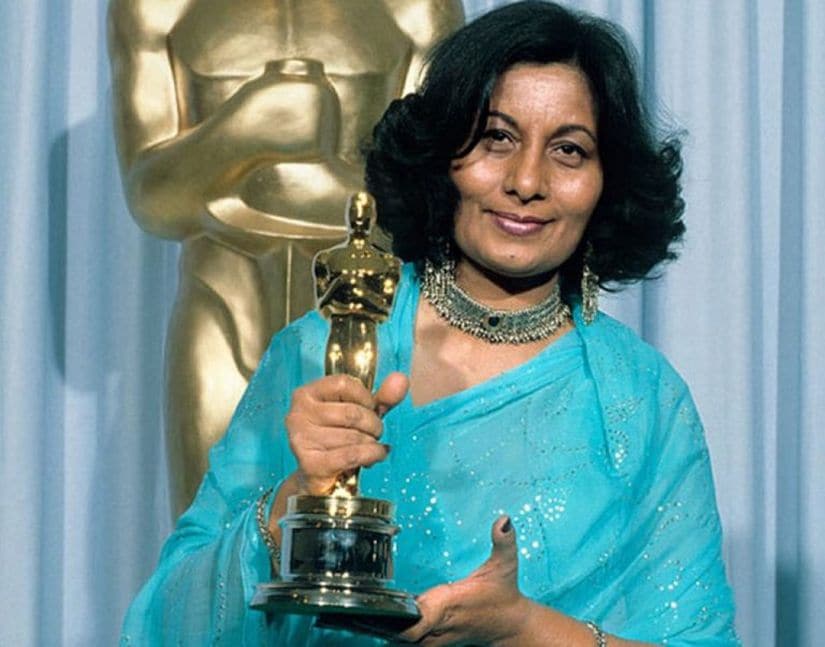 Bhanu Athaiya won India’s first Oscar for her work in Richard Attenborough’s Gandhi. Twitter/@indianeagl[/caption] “The thing that all these costume designers have in common is that they broke new ground. Athaiya’s work pushed forward costumes and styling in the 60s, that had never been done before. Neeta Lulla’s work took traditional regional wear, and gave it a modern fresh twist in Hum Dil De Chuke Sanam and Devdas. Manish Malhotra brought the tasteful glamour that had been missing in the 80s and early 90s. They all filled a different gap in the market so to speak,” says Aparna. Sujata adds, “Manish has often spoken about how influenced he was by Bhanu Athaiya, and you can see this clearly in the 2001 film Asoka, where Kareena Kapoor’s outfit directly references the 1966 film classic Amrapali, styled by Athaiya. Neeta Lulla really is a designer who does a lot of research before she does films — and is an expert at costume dramas. For instance, it is her use of polki jewellery in 2008’s Jodha Akbar that is credited for the revival of uncut jewellery with young brides. But I think all three of these designers mentioned they like their women to be feminine — and make no apologies about it."
100 Most Iconic Bollywood Costumes explores several aspects of fashion’s evolution in Hindi cinema, such as how Western clothes came to be worn by female leads and how attire accentuated character graphs
Advertisement
End of Article
Written by Devansh Sharma
Twitter handle - @inkedinwhite see more


)
)
)
)
)
)
)
)
)



